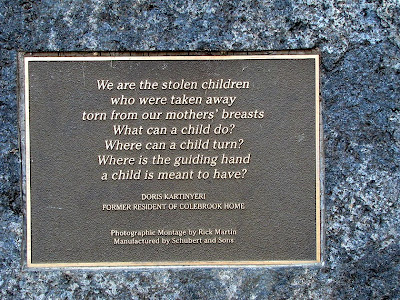
~
Kaurna people and Kaurna landThe Kaurna people (pronounced, Garna) are the traditional Aboriginal owners of the area now called, Adelaide. Kaurna land stretches along a narrow corridor across 29 council areas from Cape Jervis in the south, to Broughton in the north.
The Adelaide City Council works closely with the Kaurna people on specific initiatives that include giving all 29 parks around Adelaide Kaurna names, and assigning dual names to prominent sites around the city. For example, Victoria Square, in the heart of the city is also called Tarndanyangga, an Aboriginal name meaning a place of the Red Kangaroo Dreaming. The River Torrens has the dual name, Karrawirra Parri, or red gum forest river, in the Kaurna language.
There are several locations that should be on everyone’s itinerary if they are at all interested in Aboriginal culture. These attractions and their locations are detailed in the rest of this feature .
Tandanya (the National Aboriginal Cultural Institute)Established in 1989, Tandanya is Australia’s oldest Aboriginal owned and managed multi-arts centre.
Tandanya is a visionary and vibrant place to explore and experience contemporary and traditional Aboriginal and Torres Strait Islander culture. The centre features an ongoing performing and visual arts program, exhibitions, tours, a cultural presentations and performances.
Tandanya is open daily from 10am to 5pm
(except Good Friday, Christmas and New Years Day).
Entry: Free into gallery spaces
Performances: Adult $5, Concession/Kids $3
Address: 253 Grenfell Street, Adelaide
The South Australian Museum For over a century the South Australian Museum has been involved in the collection, study, display and interpretation of Australia's Aboriginal cultures.
The Museum’s Australian Aboriginal Cultures Gallery holds the largest display of Australian Aboriginal cultural objects in the world. Consisting of over 3000 artefacts, sound recordings, films, photographs, and manuscripts, the collection reveals the beauty and sophistication of Aboriginal culture.
The SA Museum is open daily from 10am to 5pm
(except Good Friday and Christmas Day)
Entry: Free
Location: North Terrace, Adelaide
Other places of interest include:
- The Piltawodli Memorial (off Memorial Drive) was installed in May 2000 to commemorate National Sorry Day. Piltawodli is a Kaurna word meaning ‘possum place’.
- Kaurna meyunna, Kaurna yerta tampendi (Recognising Kaurna people and Kaurna land) the reconciliation sculptural work in the forecourt to the Adelaide Festival Centre
- The Three Rivers Fountain (Victoria Square), commissioned by the Adelaide City Council to commemorate the 1968 visit of Her Majesty Queen Elizabeth II
- Yerrakartarta, Kaurna for ‘at random’ or ‘without design’, in the forecourt of the Hyatt Regency Hotel on North Terrace, reflects the seemingly random order of the natural world and consists of various elements set within the pavement and surrounding walls.
More Information
A walking guide is available for visitors who want a more detailed, self-guided tour of the Kaurna and European history that abounds right across Adelaide. The guide is available from the SA Museum, the Adelaide Festival Centre, and
the Adelaide City Council.
SOURCES: Adelaide City Council Aboriginal Attractions Guide
IMAGE: Courtesy Tandanya










